Many people are asking: “What are the different types of Construction Waste?” It's a good question and the online answers we have seen seldom list the full range of the many construction waste types which are produced. If present each one should be included in your SWMP (Site Waste management Plan). It is important to know the different waste types, so you can identify each and find the proper way to dispose of it. We set out, below, to provide a list as a template in assessing what waste will be created by any one construction project.
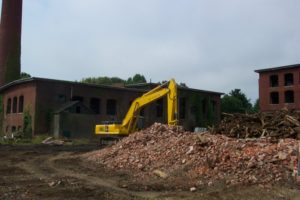
includes a wide variety of materials. Some of this construction waste can be recycled while some is considered to be hazardous in nature. Construction waste is not just limited to the outputs from demolition. Demolition waste is the largest sub-category, of construction waste, but is very far from the whole story!
To effectively manage construction waste, it is important to understand what you have. And, to start you must identify and classify the types of construction waste.
So what in general are the main types of construction waste?
According to Wikipedia:
“Construction waste consists of unwanted material produced directly or incidentally by the construction or industries. This includes building materials such as insulation, nails, electrical wiring, shingle, and roofing as well as waste originating from site preparation such as dredging materials, tree stumps, and rubble.
Much building waste is made up of materials such as bricks, concrete and wood damaged or unused for various reasons during construction. Observational research has shown that this can be as high as 10 to 15% of the materials that go into a building, a much higher percentage than the 2.5-5% usually assumed by quantity surveyors and the construction industry.
Some certain components of construction waste such as plasterboard are hazardous once landfilled. Plasterboard is broken down in landfill conditions releasing hydrogen sulfide, a toxic gas.
There is the potential to recycle many elements of construction waste. Often roll-off containers are used to transport the waste. Rubble can be crushed and reused in construction projects. Waste wood can also be recovered and recycled.
Where recycling is not an option, the disposal of construction waste and hazardous materials must be carried out according to legislation of relevant councils and regulatory bodies. The penalties for improper disposal of construction waste and hazardous waste, including asbestos, can reach into the tens of thousands of dollars for businesses and individuals.”
via en.wikipedia.org
With this in mind our list of the many construction waste types is as follows:
1. Building Materials
Construction, demolition, restoration, and remodeling projects all produce a lot of building material waste. This waste may include insulation, nails, electrical wiring, rebar, wood, plaster, scrap metal, cement, and bricks. These materials may be damaged or unused, but can be recycled or reused in other forms. Waste wood can be recovered and recycled into wood for new building projects.
Cement, bricks, and plaster can be crushed and reused in other construction or building projects. These materials can be collected in a roll of dumpster that can then be picked up by your waste management or recycling company.
2. Dredging Materials
Dredging materials are materials or objects that are displaced during the preparation of a construction or demolition site. These materials may include trees, tree stumps, rubble, dirt, and rocks. A waste management company can provide waste disposal and trash removal of dredging materials. If any of these materials can be reused or recycled, they will be taken to a recycling plant.
3. Hazardous Waste
The sites of construction, demolition, restoration, and remodeling projects often produce hazardous waste.
Contractors need to appreciate that it is possible to produce hazardous waste during construction activities from the disposal of off-cuts, part-used bottles and unused materials either bought in excess or in error.
Hazardous waste may include lead, asbestos, plasterboard, paint thinners, strippers, and solvents, mercury, fluorescent bulbs, and aerosol cans. These materials need to be disposed of according to strict state (and federal) laws [such as the Waste Regulations], and there are harsh fines and punishments for non-compliance. via www.southernwasteandrecycling.com
4. Demolition Waste (and the subset of Demolition Construction Waste Types)
Demolition Waste is broken down into the following waste sub-types:
5. Insulation and Asbestos Materials
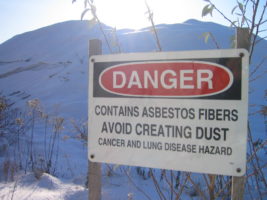
Asbestos is a hazardous material due to the risk of lung disease when inhaled, and even when inhaled at very low concentrations asbestos can cause this disease.
The largest category of asbestos material is in insulation materials containing asbestos. They are hazardous even if only containing a small proportion of asbestos. They are not recyclable and must be disposed of in accordance with best practise guidelines and regulations.
6. Concrete, bricks, tiles and ceramics
This category excludes any asbestos-containing materials which might bear the description of concrete, bricks, tiles and ceramics.
Reinforced concrete has a value as a recycled material to make new concrete, after crushing and grading to recognized quality standards. Material left-over on-site after crushing may often also be used as a sub-base material. Reinforced concrete crushing plant may be hired to enable the work to be done on site, which keeps transport costs low and minimizes vehicle movements. Re-use of aggregates from demolition of previous site structures can be very cost effective and reduce overall project costs.
7. Wood, glass and plastic
This list does not include packaging wastes and domestic type recyclables.
Wood is a type of construction waste that can be created during a building or demolition project. Commonly, construction sites will have excess wood beams, shavings, and other types of wooden scraps. When you are disposing of wood around your construction site, you may want to look into the possibility of recycling your wooden materials. Recycling wood will help prevent valuable resources from heading to the landfill.
At times the sale of wood from a demolition site can prove profitable. Re-use of high-grade wood is likely to provide the best value to construction project managers, however, lower grades may be salable if sufficient quantity is available close to a wood biomass combustion plant.
8. Plastic
This list excludes packaging waste.
Many construction sites create large volumes of plastic waste. Plastic can be found throughout many of the materials that are used to construct a brand new building. When you are creating a waste management plan for your construction site, you will need to figure out how to properly dispose of Styrofoam, PVC siding, PEX pipes, and other types of plastic materials.
9. Treated wood, glass, plastic (alone or in mixtures) containing hazardous substances
10. Bituminous mixtures, coal tar and tar
These include bituminous mixtures containing coal tar categorized as hazardous, and other bituminous mixtures which may be non-hazardous
11. Coal tar and tarred products
These are generally hazardous.
12. Metallic waste, including cable
13. Copper, bronze and brass, classed as non-hazardous.
14. Aluminium, classed as non-hazardous
 15. Iron and steel, classed as non-hazardous
15. Iron and steel, classed as non-hazardous
16. Tin, classed as non-hazardous.
17. Mixed metals, classed as non-hazardous
18. Metals containing hazardous substances, classed as hazardous,
19. Cables containing oil, coal tar and other hazardous substances, classed as hazardous.
20. Soil, contaminated soil, stones and dredging spoil
In the UK, you must be able to prove that your excess construction project soil doesn’t contain any hazardous substances to classify soil as non-hazardous. Refer to the CL:AIRE programme for ways to do this. Plus, you’ll always need to assess the soil before you hand it over to be collected.
The presence of any fragments of asbestos-containing material in the soil results in a mixed hazardous waste. In this case you'll need to refer to the Gov.uk insulation and asbestos materials tables for more guidance.
21. Soil and stones containing hazardous substances, classed as hazardous.
22. Other soil and stones, classed as non-hazardous.
23. Dredging spoil containing hazardous substances, classed as hazardous.
24. Other dredging spoil, classed as non-hazardous.
25. Gypsum
26. Gypsum materials containing hazardous substances, classed as hazardous.
A construction site may also contain large quantities of drywall and masonry waste. Drywall is typically constructed from gypsum wallboard, and there will typically be excess wallboard left over after a new building has been constructed. Masonry materials are defined [in the US] as the solid, inert products that are used to build the physical structure of a building. Some common types of masonry waste include bricks, rocks, and chunks of concrete. via www.brackenbox.com
27. Other gypsum materials, classed as non-hazardous.
28. Cement
29. Un-used or un-set cement, classed as hazardous.
30. Paints and varnishes
Those containing organic solvents or other hazardous substances, classed as hazardous. Old lead paint residues from stripping, or accumulated in other debris would fall within this category.
Not containing organic solvents or other hazardous substances, classed as non-hazardous
31. Paint or varnish remover, classed as hazardous.
32. Paint cans, classed as hazardous.
33. Adhesives and sealants
Containing organic solvents or other hazardous substances, classed as hazardous.
Not containing organic solvents or other hazardous substances, classed as non-hazardous.
34. Adhesive or sealant containers, classed as hazardous.
For more information on classifications and Waste Catalogue reference numbers, refer to packaging waste and recyclables. Source: www.gov.uk
Concluding our Article on the Types of Construction Waste
When you are a contractor on a construction site, you will need to pay careful attention to how you will dispose of all of your waste materials. Producing and acting upon a Site Waste Management Plan (SWMP) can help with this.
Since some construction waste can be recycled, whereas other materials must be sent to the landfill, it may be a good idea to consult with a professional waste company to make sure that you are :
- disposing of your waste properly
- maximizing the construction cost savings which valuable construction waste minimization segregation, reuse, and recycling and sale of the output, could add.
If you are creating a waste management plan for a construction project, consider signing up to our SWMP Newsletter, to be kept up to date on methods to save money by reusing, and recycling some of the most common types of construction waste.
Note: Our list is UK based, and uses UK waste classification headings. But, it may be useful in other countries.
Did we leave anything out? We'd like to know if we have! Please add a comment…
Types Of Construction And Demolition Waste, Types Of Construction Waste Pdf, Types Of Construction Waste UK, Types Of Hazardous Waste In Construction, Types Of Waste In Lean Construction, Types Of Waste Materials In Construction, Types Of Waste On A Construction Site, Types Of Waste On Construction Sites
Readers of this page also often view our page on Construction Waste here.
Revolutionizing Waste Recovery: Latest Separation And Sorting Innovations
Waste recovery is changing fast, thanks to new separation and sorting technology. This tech helps us sort trash better, so we can recycle more things. For example, Stadler has built a big plant in Spain for VAERSA that makes recycling easier and smarter. Keson is finding new ways to deal with old tyres, helping both […]
Top 10 UK Solid Waste Management Companies 2025
The UK waste management sector stands as a vital industry worth billions of pounds. The top UK Solid Waste Management Companies are the leading waste management firms in Britain. These companies handle millions of tonnes of rubbish each year. The industry has transformed significantly over the past two decades through strategic mergers and environmental innovations. […]
Ramp Method of Waste Disposal – Landfill Guide & Techniques
The ramp method optimizes landfill operations by creating an inclined surface, allowing efficient waste compaction and daily cover application. Unlike traditional methods, it requires minimal excavation, reducing costs and extending landfill lifespan. Proper implementation and equipment maintenance are key to effective ramp method performance in various terrains…
The Future of UK Food Waste Management – Simpler Collections and Tougher Regulation
The future of UK food waste management will be a big push toward higher recycling rates through simpler collection and far greater consistency across the nations, helping citizens understand how to be green and recycle more organic waste. As the UK continues to advance its environmental goals, recently announced government policies aimed at simplifying waste […]
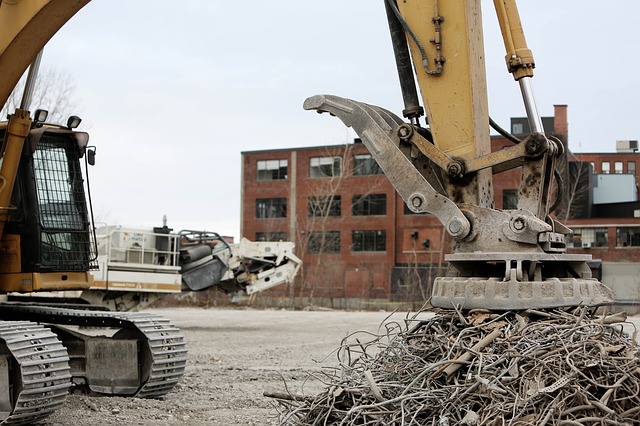

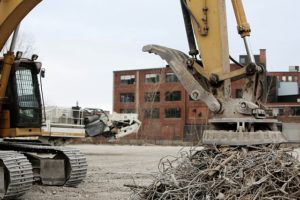

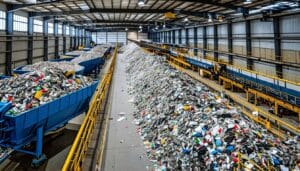
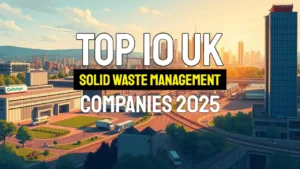
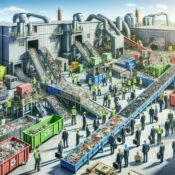
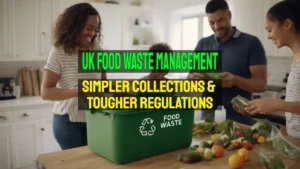

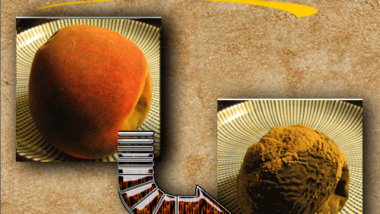

Dredging Materials Dredging materials are materials or objects that are displaced during the preparation of a construction or demolition site. These materials may include trees, tree stumps, rubble, dirt, and rocks. A waste management company can provide waste disposal and trash removal of dredging materials. If any of these materials can be reused or recycled, they will be taken to a recycling plant. A waste management company can also provide dumpster rentals in which you can collect this waste.
What is the name of the author
Thanks for this article—it’s a great reminder of how important waste management is on construction sites. I appreciate the practical tips, especially the emphasis on creating a Site Waste Management Plan and maximizing cost savings through recycling and reuse.
Currently, my employer is working with Ace Waste (https://www.acewaste.com.au/) for our waste disposal, but this article has made me think about whether we’re fully utilizing opportunities for recycling and cost reduction. Thank you!